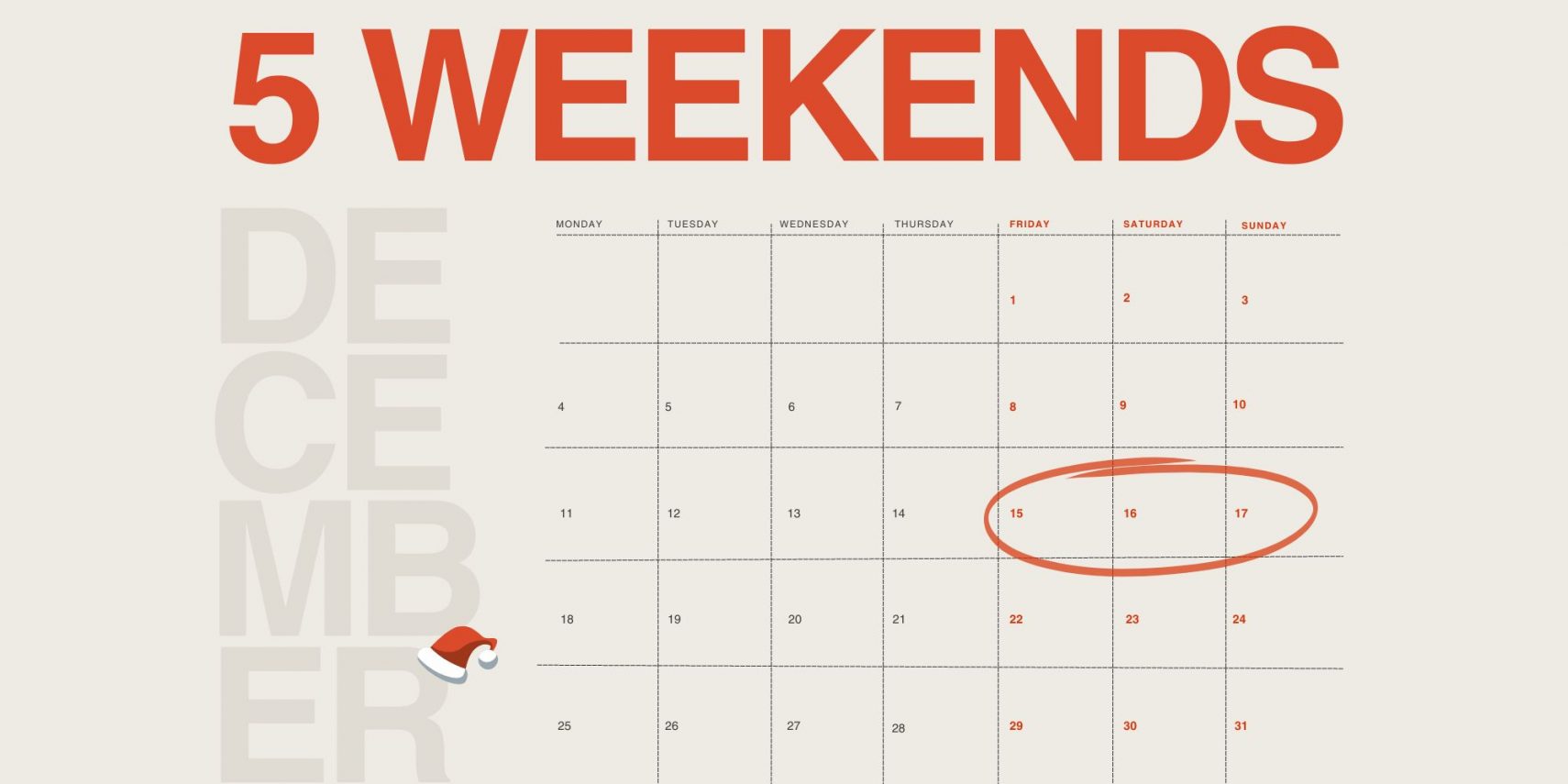Latest
5 Ways to Win the 5 Weekends of Peak

With peak fast approaching, retailers are gearing up for the busiest and most important period of the year. Following the years of Covid, and then the challenging economic times of the last year, there is cause to be more positive about this peak season. Consumer confidence has started to improve following an all-time low, energy prices are falling, and inflation has hopefully hit its peak.
When it comes to shopping, there is another reason to be positive this year; with Black Friday (BF) falling on 24th November and Christmas Day on a Monday, rather than the usual 4 weekends between BF and Christmas, this year there are 5! This presents a unique opportunity, not just for consumers but retailers too.
So, to get you in the festive spirit, here are 5 considerations Summit gives to you…
5 weekends
Research has shown that shoppers are more thoughtful about where and when to spend their money – the inspiration and consideration phases of purchases are longer than ever, with more than 50% of consumers browsing either for inspiration or purely for fun. Take advantage of the additional weekend as this provides a valuable extension for consumers when considering their purchases. Make sure you are part of this consideration phase – optimise your assets and feed to improve reach, focusing on the right messaging for your customers: show them what they need to see to choose your brand. With the cost-of-living crisis still ongoing, consumers want to know they are getting good value from a trustworthy brand.
4 all your categories
With the extra days between BF and Christmas this year, make sure you are planning your budgets accordingly: for multiple category retailers, understanding the seasonality of your products is key. Ensuring budget allocation across categories is in line with demand is an effective approach for boosting sales.
Understanding trends from previous years is a great starting point for allocating budgets and anticipating performance throughout the peak period. Beware of one-off events that may have impacted previous performance (e.g. remember the World Cup last year?); so be mindful of expectations and be ready to reforecast as we get closer to Christmas. A dynamic do, learn, reforecast approach is key to ensure effective budget management throughout the period, and will ensure you are well-prepared to meet customer demand.
3 types of LIA
Whilst the contribution of online sales continues to grow, UK consumers are still researching offline with over 60% likely to visit stores to see and touch products before purchase (Ipsos Essentials COVID-19 tracker, UK). As we get closer to Christmas, and final delivery dates are draw near, Local Inventory Ads become a linchpin in a retailer’s strategy. These ads play a pivotal role in connecting digital intent with physical action. Using LIAs ensures retailers are present when needed the most. Users want a seamless journey, with similar experiences regardless of whether they are shopping online or in store.
There are three levels of LIA: Lite, Basic, and Full. Depending on your technical capabilities and implementation, you’ll need to choose the right option (more information here). Implementation of LIAs may seem daunting, and with peak fast approaching, LIA Lite is a simple and quick way to improve CTR: using the ‘Pick up later’ annotation has been shown to improve CTR on your ads by 15% compared to standard PLAs.
For bricks-and-mortar stores, having a well-executed omnichannel approach with LIAs at the forefront can make all the difference in securing those last-minute purchases.

2 phases of purchase
Purchase journeys are not just getting longer, consumers are buying earlier too. More than 30% of gift purchases were made during October last year. By reviewing your inventory, you need to distinguish between the advanced, considered purchases and the last-minute gifts. Tailor your messaging to be at the forefront of shopper’s minds during each key phase over the next 3 months – being visible and relevant to the right shopper at the right time is vital in order to maximise sales during the peak season. Look at your assets, targets, and budgets, aligning key messages across channels and use real-time data to adjust your strategy and optimise sales.
And 1 very successful peak…
This is the Golden Quarter – the final weeks of the year are laden with opportunities for retailers; more so than ever this year after the turbulent economic times over the last 12 months. A nuanced understanding of the social-economic factors most influencing your customers, using data to make strategic decisions and monitor performance across your entire product inventory, creating a seamless omnichannel experience and getting the right message out at the right time will form the pillars of success this peak season.
By embracing these considerations, you can make the most of the extended opportunity that the 5 weekends present and deliver a seamless, impactful experience to your customers and, importantly, great returns for your business.
If you have any questions about the content of this blog, or would like to find out more about working with Summit, please drop us an email to hello@summitmedia.com
Sources
Google / Trinity McQueen, February 2023 UK Q23. Thinking about when you’re gathering inspiration about which [category] products to buy, what proportion of your time do you spend doing the following? Unweighted, n = Total 12,096, UK 4050, FR 4018, DE 4036
Google/Ipsos, Holiday Shopping Study, Oct 2022 – Jan 2023, Online survey, Base: Holiday Shoppers – Varies by week (n=624-1499)
Ready for change? Let's talk
Speak to Summit